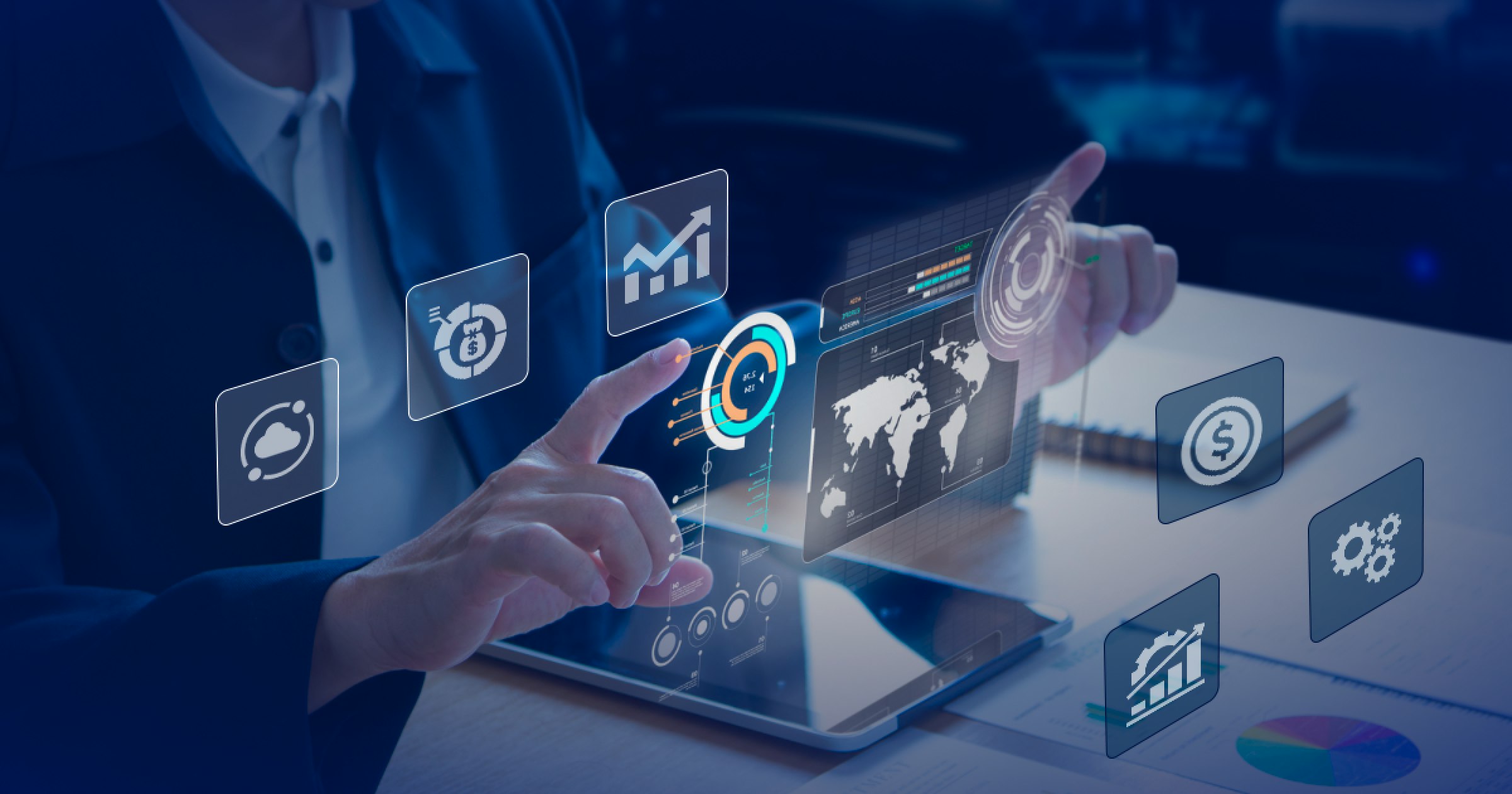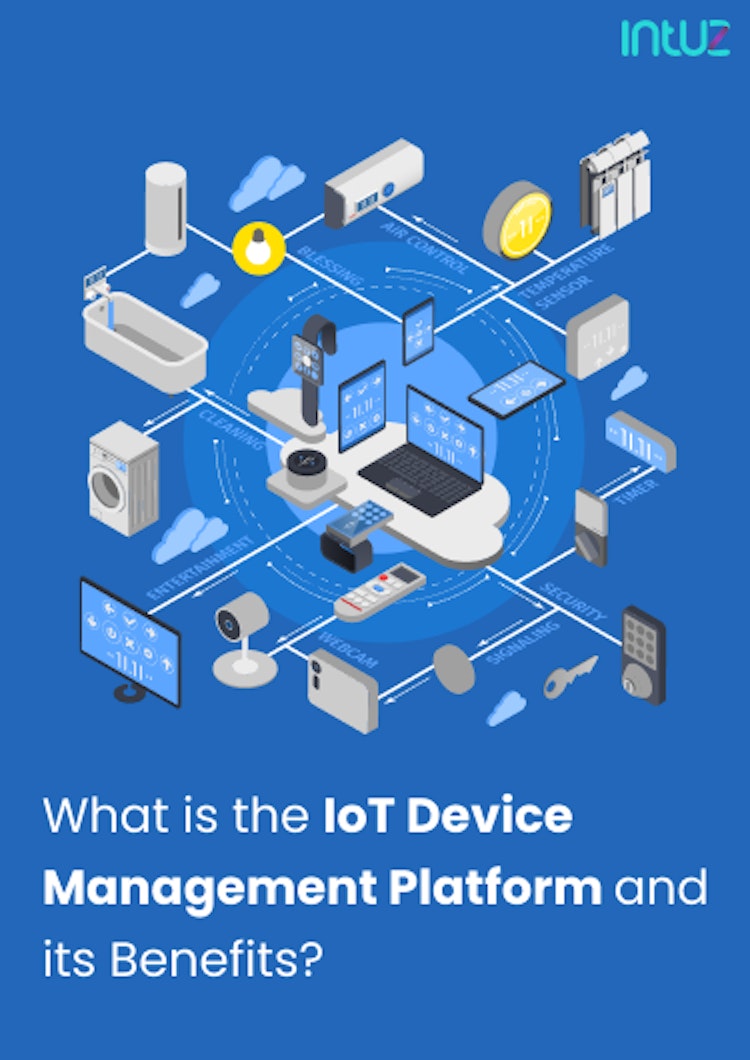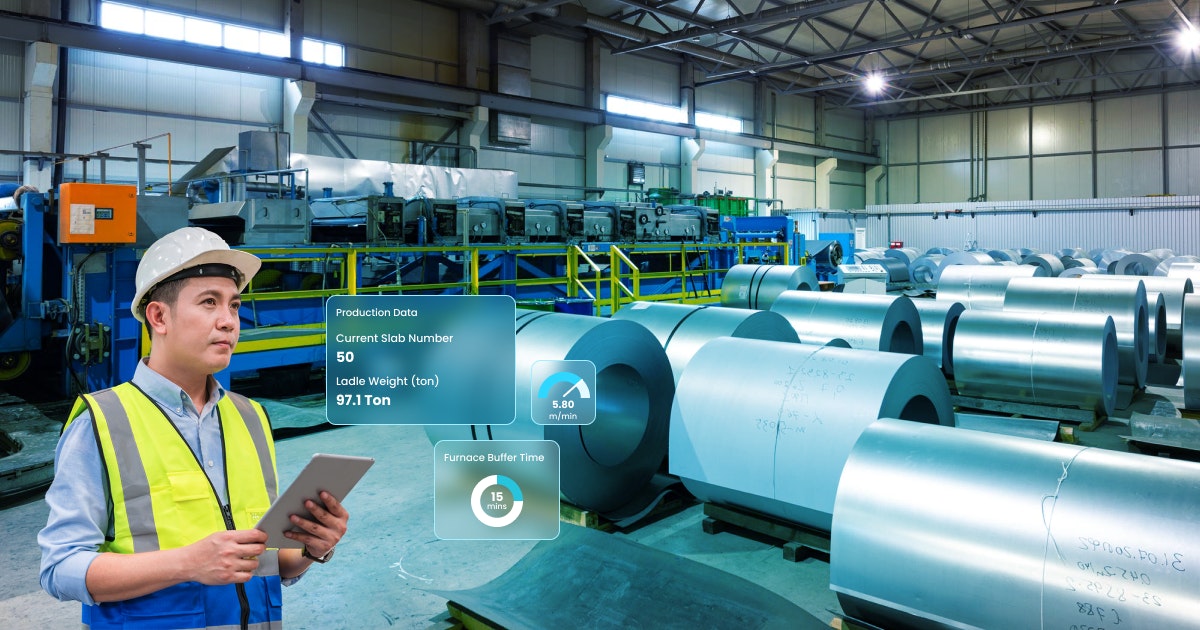Table of Content
The Internet of Things (IoT) is an emerging technological trend that has transitioned from academic discussions to practical applications across various industries, ranging from manufacturing, mining, and construction to healthcare.
This shift is made possible by the widespread availability of multiple sensors, cost-effective connectivity, scalable cloud platforms, Big Data processing and storage capabilities, all-encompassing mobile apps, and intelligent Machine Learning (ML) tools.
Smart tracking and management of assets for manufacturers
The implementation of IoT in asset management presents enticing opportunities to optimize equipment efficiency and overall asset lifecycle management, and there are numbers to prove that. Research shows that the IoT-based asset tracking and monitoring market is predicted to be around $8.5bn by 2030, growing at a CAGR of 8.74% between 2022 and 2030.
It is anticipated that there will be 267 million active asset trackers globally by 2027. IoT greatly benefits asset management in manufacturing by allowing real-time equipment monitoring through sensors. Predictive maintenance prevents unexpected downtime and prolongs equipment lifespan while optimizing maintenance costs.
IoT also improves supply chain management, inventory control, and safety by providing real-time data and analytics. Even IBM believes asset management and monitoring is one of the most rapidly maturing industrial use cases.
This blog post delves into importance of IoT, its functionalities, advantages, and applications in asset management and monitoring. It aims to guide manufacturers in embracing IoT advancements for managing assets and streamlining business operations. But first, let us start with the basics:
What is asset management and monitoring, and why is it needed?
This is a methodical process of tracking and maintaining valuable resources for organizations, which includes human resources, mobile assets like cranes or vehicle fleets, or stationary assets such as industrial equipment, raw materials, and finished goods.
An asset can range from a simple single device to a highly complex structure containing numerous sensors. Proper electrical, mechanical, and hydraulic maintenance is necessary to ensure the functionality and compliance of the assets with regulatory frameworks.
Asset management and monitoring provide real-time information on the status, location, condition, and performance of each device or equipment in manufacturing. Close monitoring of the complete asset lifecycle reduces operational expenses, increases worker productivity, extends asset longevity, and ultimately improves the organization's bottom line.
Would You Like to Enhance Your Asset Tracking with Custom IoT Integration?
Contact Us NowImportance of IoT-based asset management and monitoring
By attaching sensors to equipment and systems, IoT technology gathers critical data about equipment performance, energy consumption, fault detection, and predictive maintenance. That is not all. IoT-based asset management and monitoring are essential for several reasons, including:
1. Centralized, cloud-based environment
IoT devices enable the automatic collection, updating, and maintenance of data in a single, centralized location rather than being scattered across multiple databases. This "smart" tracking system allows workers to access data simultaneously, promoting coordination between departments.
2. Enhancement of Overall Equipment Effectiveness (OEE)
Industrial IoT integration in asset management aids manufacturers in analyzing and monitoring three crucial aspects of machines in real-time: quality, availability, and performance. This information supports decision-making processes to minimize losses and industrial downtime.
3. Remote performance management
IoT technology offers more accurate and reliable data than traditional methods, eliminating errors and inconsistencies associated with manual data collection of equipment. This is particularly useful for managing assets located in remote or hard-to-reach locations.
4. Informed decisions for maintenance, repair, and replacement
IoT sensors fetch data about asset performance, empowering manufacturers to make better-informed decisions about maintenance, repair, and replacement. This improves operational efficiency and narrows down business expenses.
5. Effective and efficient asset management
Implementing IoT solutions enhances a manufacturer's operational efficiency. Additionally, it fosters the development of innovative business models for tracking asset performance throughout the asset lifecycle. This helps identify areas for improvement and cost optimization.
How does an IoT-based asset monitoring solution work?
IoT unifies physical assets with information technology systems by transmitting and exchanging data via the internet. IoT-enhanced asset management software enables connected devices to communicate and relay information to their intended recipients autonomously, eliminating the need for human intervention. Let us dive deep into the solution's four-step process:
Step 1 - Data gathering and transmission to the cloud
The first step involves collecting data from sensors attached to physical assets, which detect various parameters, such as temperature, humidity, pressure, vibration, and location, depending on the type of asset being monitored.
The data collected by the sensors is then transmitted to the cloud through an intermediary device, such as a gateway or a router. Before sending the data, the intermediary device cleans and preprocesses it, removing any noise or unwanted information. This ensures that the data sent to the cloud is accurate and relevant.
Step 2 - Data processing
When the cloud receives the data, it is processed and converted into messages from securely connected devices published for subscribers to read. This is typically done using a messaging system such as MQTT or AMQP.
The cloud also uses data pipelines to connect the devices to their destinations. These pipelines help ensure the data is delivered to the right place at the right time.
For example, data fetched from the IoT sensors on a production line might be sent to a data warehouse for long-term storage. In contrast, data received from a temperature sensor in a refrigerator will be sent to a real-time dashboard for monitoring.
Step 3 - Data analysis using ML
The data is then analyzed using various tools and techniques, such as ML algorithms. This helps identify patterns and trends in the data, which generates insights into asset performance.
For example, based on historical data and real-time sensor readings, ML can predict when a particular asset is likely to fail. This equips manufacturers to schedule maintenance proactively, reducing downtime and improving overall efficiency.
Step 4 - Report generation
Finally, the insights generated from the data are transformed into customized reports that are easy to read and share and can be accessed through a dashboard or other visualization tool.
For example, a dashboard might show a warehouse's current temperature and humidity levels, along with alerts if these levels exceed a certain threshold. This allows warehouse managers to take action to address any issues before they become a problem.
Top IoT solutions for asset management
Implementing IoT helps streamline the entire asset management process, enabling manufacturers to maintain a competitive edge. Let us look at the top applications to know about for asset management and monitoring:
1. Geo-fencing
This technology uses GPS-enabled sensors to establish virtual boundaries or geofences around physical locations, and it is used for tracking and managing the movement of assets in real-time.
Organizations can prevent unauthorized movement or use of valuable equipment by setting up virtual boundaries around specific locations, such as a construction site or warehouse.
For example, if a piece of equipment equipped with a GPS-enabled sensor moves outside the predefined geofence, an alert can be triggered, notifying the appropriate personnel of the breach. Geo-fencing is also used to ensure that the assets are deployed in the right locations and remain there for their deployment.
2. Logistics monitoring and tracking
IoT-enabled sensors provide real-time data on the location and condition of goods in transit, reducing the risk of lost or damaged shipments. This logistics monitoring and tracking feature ensures that the correct goods are delivered to the right place at the right time, improving customer satisfaction and reducing costs.
3. Predictive maintenance
Yes, this is another area where IoT is being utilized. IoT-powered analytics and ML predict equipment failures and recommend proactive maintenance, minimizing downtime and maximizing the lifespan of assets. This feature ensures that assets remain in optimal condition, minimizing the need for reactive maintenance and repair.
4. Warehouse stock management
This involves tracking and managing inventory within a warehouse or distribution center. IoT sensors can automate many stock management processes, improving overall efficiency and reducing the risk of inaccuracies.
The technology also tracks stock levels in real time, providing accurate data on inventory levels and identifying when stock levels are running low. This information triggers automatic reordering or alerts warehouse managers to replenish stock levels manually.
5. Real-time location monitoring
IoT sensors can track the physical location of assets in real time using various technologies such as GPS, RFID, and Bluetooth. They optimize their use of assets, minimize the risk of loss or theft, and improve their overall asset management processes.
For example, in logistics, real-time location monitoring helps keep an eye on the movement of goods from one location to another, allowing organizations to ensure that shipments are delivered on time and in proper condition.
6. Condition monitoring
This is a process used in asset management to detect and diagnose potential faults and failures in equipment or machinery before they become serious issues.
IoT sensors monitor assets' environmental conditions and performance, ensuring they operate within optimal parameters and identifying potential problems before they escalate. This feature helps businesses to optimize asset performance, reduce downtime, and extend asset life cycles.
7. Asset lifecycle management
This involves tracking and managing an asset from its acquisition through to its disposal. Manufacturers make informed decisions on equipment maintenance, replacement, or disposal by collecting and analyzing data from IoT devices installed on assets, optimizing resource allocation and reducing costs.
For example, IoT sensors can collect data on the performance and usage of an asset, allowing maintenance teams to schedule maintenance proactively, reducing the risk of downtime and extending the asset's life.
In addition, IoT data is used for making informed decisions on when to replace or dispose of an asset. The technology helps identify when an asset is approaching the end of its life, allowing manufacturers to plan for its replacement or disposal proactively and avoid unexpected breakdowns.
Benefits of IoT in asset monitoring
IoT has proven to be a game-changer for manufacturers as it adds intelligence to traditional asset management and monitoring solutions, increasing productivity and efficiency.
With real-time data analysis, dynamic edge control, and automated workflows, IoT solutions help achieve maximum output and increase asset efficiency. Let us look at the various benefits the technology brings to the table:
1. Real-time monitoring
By employing IoT, precise data gathering is guaranteed, enhancing system dependability and minimizing unexpected downtime.
Manufacturers can effectively monitor their assets' performance through continuous supervision, resulting in optimal productivity and heightened asset efficiency.
2. Reduced human participation
IoT technology equips organizations with the knowledge of their assets' details, thereby minimizing the necessity for human input. It consistently monitors all assets using IoT sensors affixed to each individual asset.
This facilitates intelligent asset tracking and remote evaluations, suppressing or diminishing the need for in-person visits. As a result, IoT streamlines the asset management process and decreases the reliance on human intervention.
3. Enhanced asset efficiency
IoT sensors can assess numerous system factors, which can be integrated into asset management software for predictive upkeep. For instance, a manufacturing facility can track its assets' condition, lowering operational expenses, and notify plant supervisors when operating parameters like temperature or environment fall outside acceptable limits.
4. Downtime reduction through predictive analysis
By examining data gathered by IoT sensors, predictive maintenance identifies and resolves problems before they result in equipment breakdown, substantially cutting down expenses related to unforeseen failures.
5. Significant cost savings and expense tracking
By providing detailed insights into the performance and condition of assets, IoT technology allows for a more proactive approach to maintenance and decision-making. This ensures potential problems are identified and resolved before they escalate, preventing costly breakdowns and associated downtime.
Moreover, IoT-based asset management facilitates comprehensive cost tracking by offering real-time visibility into asset-related expenses. This level of transparency enables organizations to optimize their resource allocation, reduce wastage, and make well-informed financial decisions.
Cutting-edge Industrial IoT Solutions and Development Services
Explore IIoT6. Data security
In IoT-based asset management, there are two key aspects to note: data authentication and data encryption. Data authentication involves verifying the identity of devices or users accessing the data, ensuring that only authorized entities can access sensitive asset information.
This process may include using digital certificates, unique device identifiers, or other authentication mechanisms that help maintain the integrity of the data by preventing unauthorized access.
Data encryption, on the other hand, safeguards the privacy of the transmitted information by converting it into a secure format that can only be accessed by authorized users with the correct decryption key.
By employing robust encryption techniques, IoT-based asset management systems can protect sensitive data from potential eavesdropping, interception, or tampering during transmission and storage.
7. Single platform for multi-asset monitoring
This arrangement enables manufacturers to consolidate the monitoring of various assets, such as machinery, vehicles, or other equipment, under one system.
By centralizing the management of these assets, they can gain a holistic view of their entire asset portfolio, making it easier to identify trends, detect issues, and optimize performance. This increases productivity and efficiency, as teams can focus on higher-level tasks and strategic decision-making rather than managing disparate systems.
8. Optimized monitoring and maintenance
When a manufacturing facility employs advanced monitoring methods to keep track of its asset health, related operational expenses can be significantly reduced. IoT sensors implement predictive maintenance strategies, which help identify and address potential issues before they escalate into costly failures.
As a result, the overall efficiency and reliability of the manufacturing process can be improved. In addition, IoT sensors can promptly alert plant managers when operating parameters of assets, such as temperature or environmental conditions, fall outside permissible ranges.
This real-time monitoring capability enables them to take corrective actions swiftly, minimizing downtime and mitigating potential risks.
IoT-Enabled Livestock Management: Revolutionizing Animal Tracking and Monitoring
Read NowOver to you
By harnessing the power of IoT, manufacturers can obtain a holistic understanding of their assets. The gathered data offers crucial insights that can be employed for efficient asset planning, supervision, and tracking. Consequently, this leads to enhanced productivity, increased profit margins, and reduced operational costs.
If you are looking to streamline your asset management processes and improve your organizational efficiency, it is time to consider implementing IoT technology with the help of Intuz. Our experts handle IoT projects of all kinds for various industries and purposes.
Book a 45-minute free consultation with Intuz IoT experts and get a free roadmap or strategy of IoT integration for your assets tracking and management.






